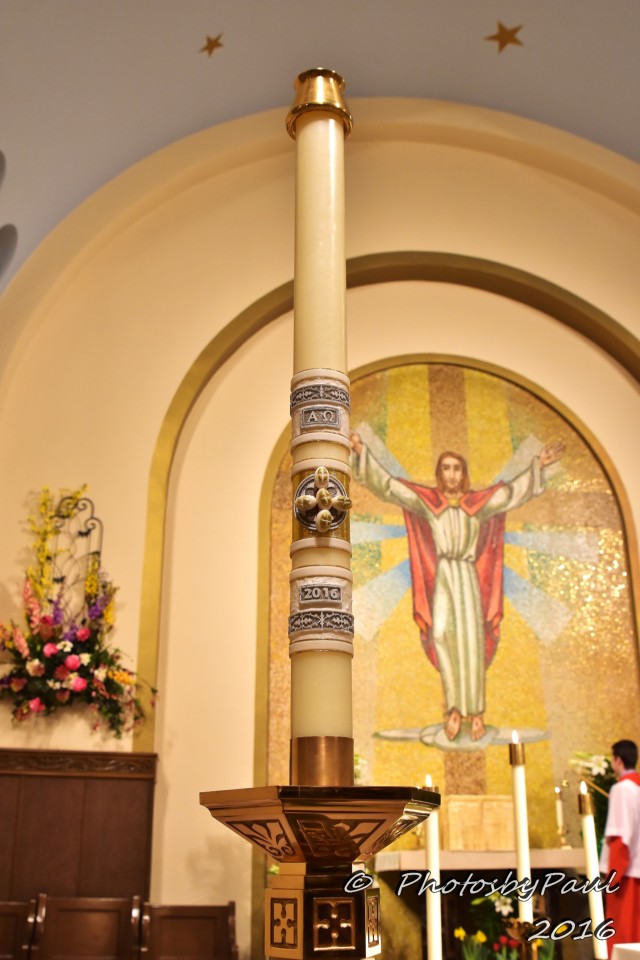The most likely origin of the Paschal Candle is that it derived from the Lucernarium, the evening office with which early Christians began the vigil for every Sunday and especially that of Easter.
In turn, this rite is probably inspired by the Jewish custom of lighting a lamp at the conclusion of the Sabbath. The rite therefore has its roots in the very beginning of Christianity.
In the Lucernarium rite the light destined to dispel the darkness of night was offered to Christ as the splendor of the Father and indefectible light. This Sunday rite was logically carried out with greater solemnity during the Easter Vigil.
There is clear evidence that this solemn rite began no later than the second half of the fourth century. For example, the use of singing a hymn in praise of the candle and the Easter mystery is mentioned as an established custom in a letter of St. Jerome, written in 384 to Presidio, a deacon from Piacenza, Italy.
Sts. Ambrose and Augustine are also known to have composed such Easter proclamations. The poetic and solemn text of the “Exultet,” or Easter proclamation now in use, originated in the fifth century but its author is unknown.
The use of the candle has varied over the centuries. Initially it was broken up after the Easter Vigil and its fragments given to the faithful. This was later transferred to the following Sunday; but from the 10th century the use prevailed of keeping it in a place of honor near the Gospel until the feast of the Ascension (now until Pentecost).
From around the 12th century the custom began of inscribing the current year on the candle as well as the dates of the principal movable feasts. The candle hence grew in size so as to merit the attribution of pillar mentioned in the “Exultet.” There are cases of candles weighing about 300 pounds. The procession foreseen in the present rite requires much more moderate dimensions.
https://www.ewtn.com/library/Liturgy/zlitur169.htm


